Nov 11, 2020 | Brian Li ('22), Summer Experiences
After witnessing the far-reaching and debilitating effects of the COVID-19 pandemic on our communities, a group of Pingry students, public school students, and I looked on anxiously, wondering if anything could be done to help alleviate this dire situation. With virtually all schools going remote during the pandemic, many students did not receive the same quality of education that they usually would have, stunting their learning and putting them at a disadvantage compared to their peers. We wanted to help such students continue to learn and enrich them with knowledge that could benefit them down the road.
Thus, STEMinPlace was born: a group of high schoolers who wanted to help the community during the COVID-19 pandemic by providing high-quality, free, interactive, and fun learning opportunities for middle schoolers. “STEMinPlace started as just an idea; I knew I had the goal of teaching middle schoolers these STEM topics, but I wasn’t sure how to get there,” founder Ryan Arrazcaeta (V) stated. After forming a team and creating our website (steminplace.com), we decided on a structure for our program that would effectively educate our students and set us apart from similar organizations. By offering six STEM courses––Chemistry, Physics, Computer Science, Astronomy, Genetics, and Game Theory, we hoped to provide students with various courses that they could choose from, stimulating their interest and potentially sparking a passion for a subject that they were previously unaware of. In addition, we invited guest speakers every week to demonstrate how these topics apply in the real world.
While the structure of our program was coming to fruition, we were worried about raising awareness. Finding enough students for a fledgling organization seemed nearly impossible. We reached out to family and friends to spread the word, unsure if we would even have 10 students. One day, to our surprise, we checked the responses to our signup form and saw over 100 registrations and counting. This shock quickly turned to horror as we were initially overwhelmed by this sudden influx of students. Nevertheless, we adjusted our curricula, prepared for a much more exciting than we previously imagined, and with our combined teamwork, successfully taught just short of 1000 students over the course of six weeks.
Our classes and commitment to education were much appreciated by our students and their families. In part, we continued to receive more signups because of students and parents recommending our program to others. They also expressed their gratitude by commenting on our program. One said, “Volunteer high school kids pulled off remote learning better than the paid professionals at my kids’ private school. What more can I say? Amazing.” Several parents offered donations, but we asked them to donate to other organizations with similar missions, namely the “I Have a Dream” Foundation, Teaching Matters, and the Michael Aymar Foundation.
STEMinPlace has also been an enriching experience for our team. We learned how to run an organization, developed valuable leadership and educational skills, and for some of us, gained a passion for teaching and community service. Connor Chen (V) discovered that he “thoroughly enjoyed teaching others about topics that [he] knew a lot about and realized that sharing [his] knowledge with others is very gratifying. [He] also learned how management works behind the scenes and gained valuable experience in how to run a program with a motivated team to work alongside [him].” We hope we helped our communities in any way possible and provided students with an education that they will never forget.
Nov 2, 2020 | Featured, Meghan Durkin, School News, Sidebar News
By Meghan Durkin (VI)
This year’s freshman retreat, held on Thursday, September 3, kicked off an unprecedented school year. Instead of visiting Bryn Mawr Mountain Retreat as originally planned, this year’s retreat was held at Pingry to respect coronavirus guidelines. Although masks and shields brought an unusual element to the retreat, the goal of the day remained the same: provide freshmen an opportunity to interact with their classmates, as well as their peer leaders, before the official start of the school year.
Leading up to the retreat, this year’s 36 peer leaders met to prepare during a retreat of their own. They participated in bonding activities, found out who their co-leader was, and created various icebreaker activities for the freshman. Typically, the freshman retreat is planned by Bryn Mawr; however, this year, the activities were left to the peer leaders. As a group, they brainstormed ideas such as “icebreaker UNO” and Jeopardy.
With all that preparation, Thursday kicked off with a quick coronavirus safety briefing by Mr. Graham Touhey and an introduction to the peer leaders. Then, each peer group, consisting of about eight freshmen and two seniors, went off to get to know each other. Each group did their own activities, from charades and kickball to Jenga and “Shark Tank.”
The day did bring many new challenges, as this was the largest number of students on campus since March. Peer leader Zara Jacob (VI) described these difficulties: “There were quite a few bumps and some moments where the last thing I wanted to do was talk with my mask on, but I still got to meet my freshmen in-person. I got to know them on a level you just can’t through a screen.”
Like many others, Jacob was able to make the most of the day, even though it was different than anticipated. Her favorite activity was the peer leader hunt: each peer group and one of their leaders used clues to find the other leaders hidden throughout the building and campus. “When I was with my peer group, we were all just walking together, listening to music, and talking,” Jacob recalled.
Throughout the day, the peer groups also competed in a TikTok challenge. These videos had to reflect how they hoped to be defined as a group; at the end of the retreat, all the TikToks were viewed in Hauser and voted on. Ultimately, this challenge allowed the groups to explore their creativity and work together.
While this year’s retreat still allowed freshmen an opportunity to get to know each other, the traditional overnight retreat was missed by all. Ms. Lorian Morales, one of the peer leadership advisors that helped plan the retreat, acknowledged those disappointments: “Having that time away together, whether it’s on the bus, walking the trails, sharing meals, or hanging out in the cabins, allows students the opportunity to interact at their own pace in a relaxed environment.”
However, the retreat’s unusual elements brought many positives as well, as the Pingry community finally came back together. “Watching the day unfold put me at ease. Students were back on campus, making new friends, reconnecting with old friends, and just enjoying each other’s company,” Ms. Morales said.
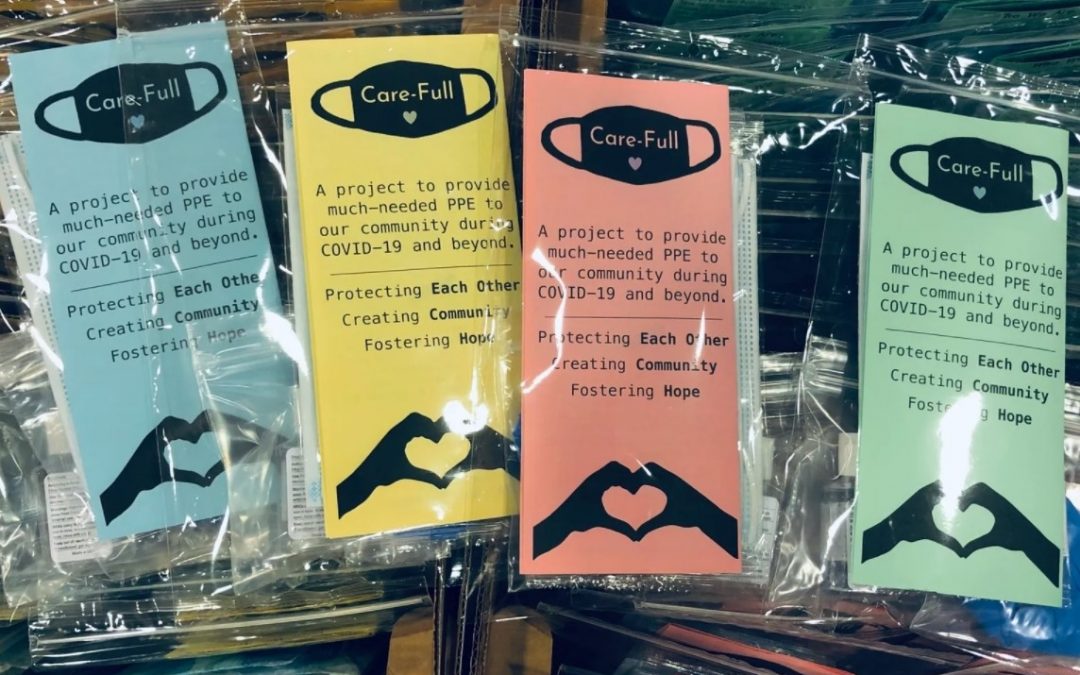
Nov 2, 2020 | Andrew Wong, Featured, Summer Experiences
By Andrew Wong (V)
This past May, with the COVID-19 pandemic still raging, Noah Bergam (VI), Kristin Osika (V), Eva Schiller (VI), and myself formed an organization called Care-Full to distribute PPE to underserved communities around New Jersey. With the new health and economic challenges brought on by the pandemic, we knew many in our local communities would be struggling financially and might not have access to masks, gloves, and hand sanitizers, and this problem would only be exacerbated in the next months. Rather than sitting back and watching, we took action, creating a plan to supply these necessities to the community.
We decided to create care packages consisting of a 30 mL bottle of hand sanitizer, three individually wrapped face masks, a pair of disposable gloves, and an originally designed pamphlet on how to stay safe during the pandemic. We all drew upon our various unique skill sets and connections to accomplish this task. Noah and Eva used their publishing experience to create advertising materials, Kristin reached out to various organizations for deliveries and donations, and I organized assembly sessions at Pingry to collect PPE and make our care packages. Our combined teamwork over the course of the summer allowed us to make and donate over 1,900 care packages, while raising almost $3,500 toward the creation of more packages.
Our care packages were gladly received by many in our local community. We donated to a variety of charity organizations, such as the Interfaith Food Pantry, NourishNJ, the Visiting Nurses Association of NJ, Market Street Mission, and various other nursing homes and churches across New Jersey. Helping the community through Care-Full has been especially rewarding for the team.
As America reopens, PPE is mandatory in most public settings; those without a mask are barred from entry to stores and small businesses. Those who lack access to PPE face limited entry into these public spaces, and thus necessities such as groceries might be difficult to come by. Additionally, going to work or buying food can be stressful for those who lack proper protection against COVID-19. By providing PPE in these care packages, they ensure that everyone – no matter their socioeconomic status, risk factors, or age – can visit public locations and go outside without difficulty or fear.
To continue these vital efforts and sustain their ability to provide PPE, Care-Full needs the help of everyone in the community. The Care-Full team is currently researching ways to raise awareness in order to create and distribute more care packages. Anyone can make a monetary donation by clicking the link on their website at care-full.org, or clicking the links on our Instagram (@we_are_carefull) pages. We can also be reached via email at 2020.carefull@gmail.com. All donations go directly to the making of care packages: just $2 can supply a care package to someone in need!
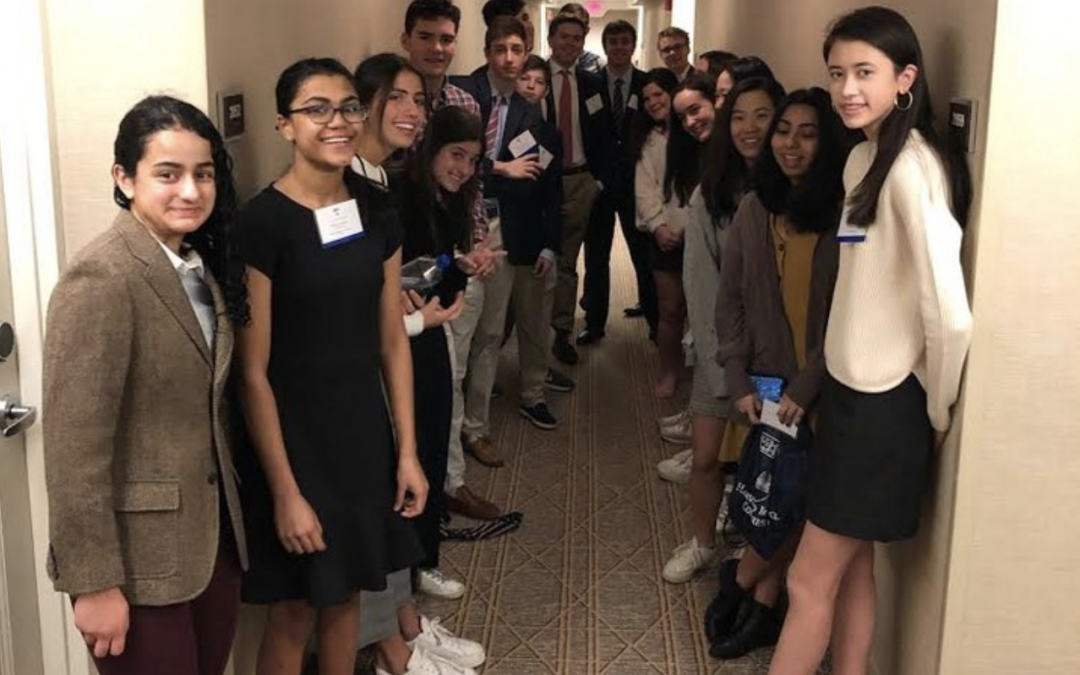
Apr 20, 2020 | Featured, Mirika Jambudi, School News, School Trips
By Mirika Jambudi (III)
On February 20th, Pingry students travelled to Boston, Massachusetts to participate in the Harvard Model Congress (HMC) held at the Boston Sheraton Hotel. HMC, the largest congressional simulation in the world, provides students the opportunity to learn what participating in the United States government is like.
Each student was assigned a current member of the U.S. House of Representatives or Senate to represent while at the conference. Before the event, students researched their roles, learning their delegate’s stance on various issues selected by the conference organizers.
During the conference, participants from around the country gathered to engage in lively debate, learn how to compromise, and simulate drafting legislation for the passage of bills. “I learned how to work with delegates from the other party to write bipartisan bills and make amends to certain sections of the bill to please both parties. Overall, it was a really great experience,” said Vared Shmuler (III). Sophomore Sarah Kloss (IV) gave several speeches as Billy Long, a Republican Congressman from Missouri, and was even able to present her bill during a full committee meeting.
On Friday, students had the opportunity to visit the Harvard University campus during their break. Afterwards, awards for outstanding performance at the event were announced. Ian Larson (VI) was awarded an honorary mention for best delegate in his committee, the National Economic Forum.
After an educating and engaging weekend, Pingry students are looking forward to returning to Harvard Model Congress next year!
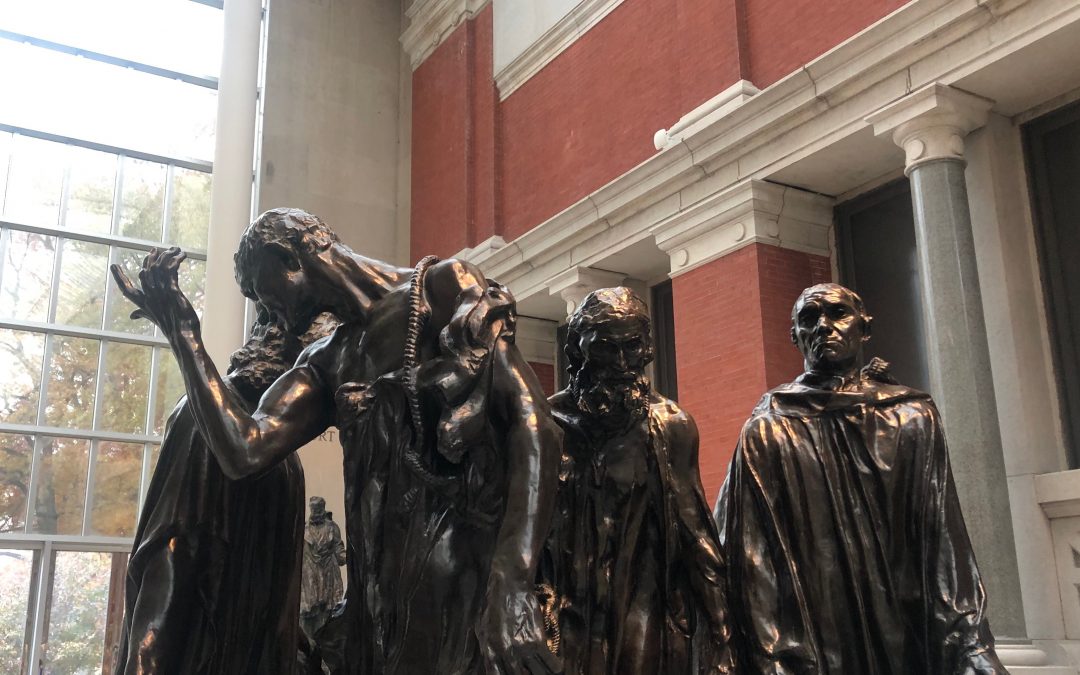
Dec 9, 2019 | School News, School Trips
By Vicky Gu (VI)
On Monday, November 18, the AP Art History class, along with Mr. Nigel Paton and Ms. Paula Fisher, took their annual trip to the Metropolitan Museum of Art in New York City.
Before the trip, students studied the art of people from Africa, Oceania, western North America, and classical antiquity. They saw many works in real-life that they had previously seen only on computer screens.
The field trip started in the Greek and Roman art wing. Students viewed Mediterranean art from various different ancient eras and were able to compare what they had learned in class to the actual sculpture. The Greek, Archaic Marble statue of a kouros, for example, was slightly disproportionate and much more stiff-limbed than the Hellenistic, Roman Marble sarcophagus with the Triumph of Dionysos and the Seasons that was sculpted almost three hundred years later.
The students examined other works that hadn’t been studied in class, such as various Greek vases, Roman bronze sculptures (which often copied or were inspired by Greek sculptures), and frescoes. The Met even had a reconstruction of a room—the fresco walls of Cubiculum (bedroom) from the Villa of P. Fannius Synistor at Boscoreale. These walls were painted with perspective, vivid colors, ornamental details, and give a relatively small area a greater sense of space.
The students had previously been assigned to present various pieces of artwork from Africa and America. A particularly striking artwork was the Nkisi n’kondi, or Power Figure, created by the Kongo people in the late 19th century. Many students were amazed by the intimidating atmosphere and size of the wood sculpture as it stood on its raised pedestal. Carson Shilts (V) and Sandra Adablah (V) presented the work and explained that every time a villager committed a crime or a sin, the citizens would hold a meeting for the sinner to apologize. Nails, shards of glass, and other sharp objects were driven into different parts of the figure’s body depending on the severity and nature of the crime.
Other works presented include bronze plaques of African royalty and Native American elk hides and masks. Students, who had already learned about the ceramic processes of Maria Martínez of the San Ildefonso Pueblo, were able to view her Black-on-Black Jar, which was particularly unique given the use of glossy and matte black surfaces in her designs.
The field trip concluded with an hour of free time to explore the rest of the museum. While some students wandered around to see what other works might interest them, others had already planned to search for specific artists and movements.
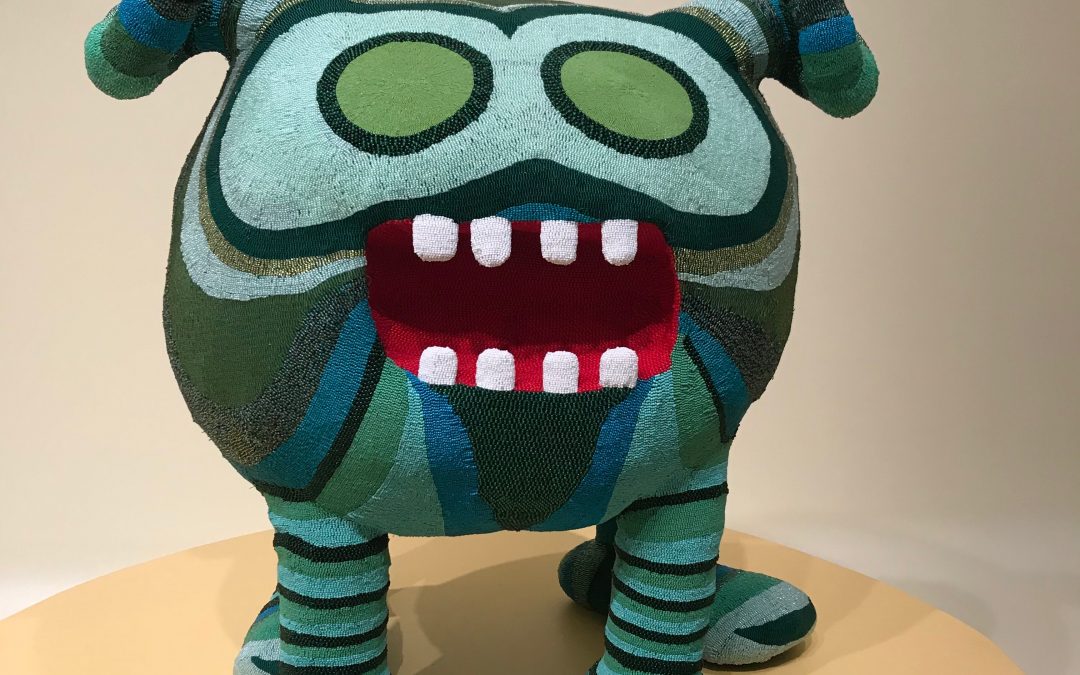
Dec 9, 2019 | School News, School Trips
By Carson Shilts (V)
On October 18, over one hundred students filed into buses and rode to Chelsea, New York. There, with bagels in their hands and earbuds in their ears, students in photography, drawing and painting, and portfolio classes discovered the awe-inspiring artworks exhibited in the Chelsea art galleries.
Chelsea’s galleries display a variety of different types of art. One well-known artist whose work was exhibited is Christian Marclay, who creates abstract art inspired by anime. Marclay is known to embody sound and music in his paintings and videos. Another featured artist was Ed Clark, a highly respected painter who is known for his striking abstract impressionism paintings. The students who went to his gallery were able to appreciate his talent and acknowledge the imprint he has left on the art community. The galleries also displayed works from up and coming artists, achieving a balanced variety of well-known and newer work. From political pieces to vibrant monster sculptures, there was an exhibition for everyone.
Once they arrived, the students were split up based on the classes they are in so they could see all the artwork that was most connected to what they were currently learning. Though this trip was meant to break the boundaries of the types of art that students were accustomed to seeing, an emphasis was placed on art that correlates with their medium. Students were also asked to take nine separate photos: three artworks that inspired them, three artworks they did not understand, and three artworks that they would give to their friend as a gift. This allowed students to analyze the art from different perspectives.
The photography teacher, Mr. Boyd, said that he “wanted students to get a new range of ideas of what kind of art is out there.” He hoped that this would then “create another layer of ideas” that students could bring back to the classroom and incorporate into their own work. Fortunately, his hopes came true. When asked what she learned, Abby Parrish (V), a photography student, said, “Going into the trip I had a closed view of what art is and what art should be. When visiting the galleries, I realized there were many more different types and perspectives of art that I hadn’t even known existed. For example, there was this one gallery that had a kitchen in the back and it was using space as art and I had never thought that art could be portrayed in that way, which I thought was really cool.”
After viewing the galleries, students visited Chelsea Market, escaping the cold to eat lunch and shop for souvenirs. Upon returning to Pingry, participants headed to their classrooms to reflect on what they found most interesting. They also shared the photos they were asked to take. Overall, the trip to the Chelsea Galleries was incredibly successful, and the art students and faculty are excited to go again next year!
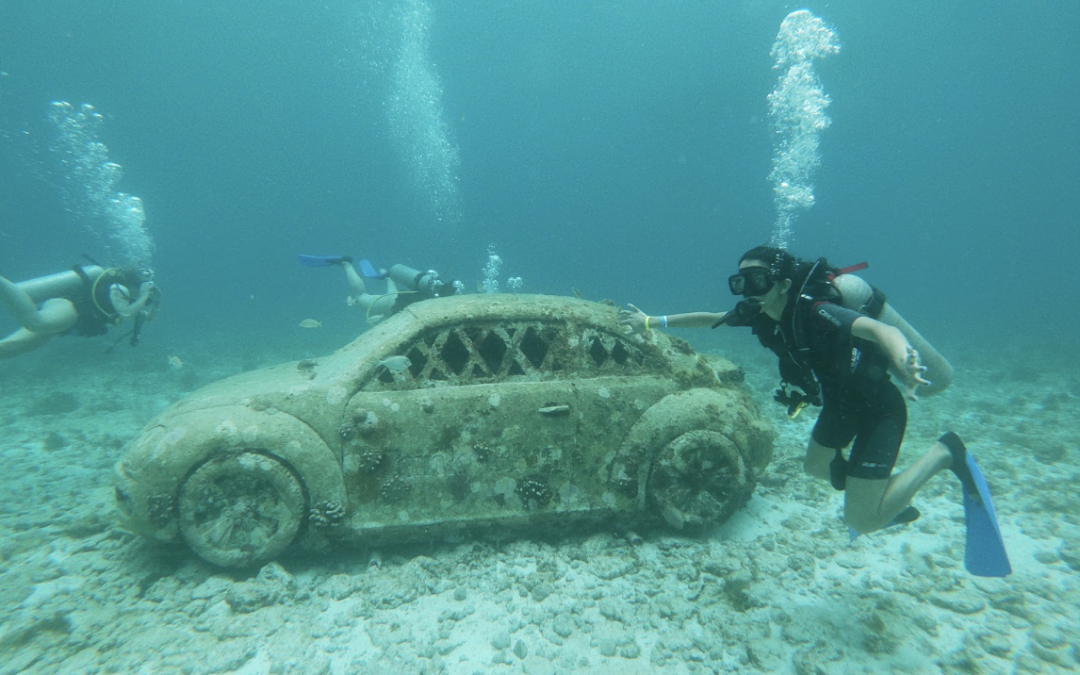
Oct 18, 2019 | Summer Experiences
Anjali Kapoor (VI)
This summer, I was able to learn about two of my favorite subjects outside of the classroom. I interned at an orthopedics lab where I was exposed to a whole new side of biology research, and I traveled to Spain and Cancun to immerse myself in Spanish culture.
I spent most of my summer interning at Dr. O’Connor’s orthopedics lab at Rutgers Medical School. I had conducted microbiology research in the past, but this was my first time working with something larger than a cell––a mouse.
I also learned about the many different projects occurring in the lab. One Ph.D. student was working on improving the efficiency of bone allografts, a surgical procedure that repairs missing pieces of a bone. I watched her perform numerous rat surgeries, in which she anesthetized the rat, cut out a piece of the femur bone, filled the gap with bone chips and a variable treatment, and then stitched up the rat. It was fascinating to watch the surgery because it was just like a human surgery, just on a much smaller scale. After a number of weeks, we would X-ray the rat to determine how well the bone was healing. I helped by examining X-rays and creating, staining, and analyzing microscope slides of bone slices. This research could identify treatments that can be used to expedite bone healing for human bone injuries.
Another scientist was working on perfecting the technology to track the flexion of a rabbit in 3D space. She walked me through a giant set up of multiple x-ray machines and cameras. Together, these machines tracked the movement of titanium beads, which she had inserted into the rabbit spine. It was amazing to see this extremely integrated application of math, biology, and technology. This novel experiment has the potential to help us understand the movement and coordination of different bones in the body, such as the bones in our ear canal, which scientists currently do not completely understand.
Most of my research this summer focused on trying to better understand the role of COX-2, a protein involved in bone formation. The lab was particularly interested in this protein because over-the-counter painkillers inhibit its function, and as a result, may be simultaneously impairing bone healing. Understanding this individual protein’s function could also give insight into the broader connection between inflammation and bone healing.
After the completion of my internship, my family traveled to Cancun and Spain. After studying Spanish for the past seven years, I was excited to finally travel to the countries I had learned so much about. In Cancun, my favorite experience was scuba diving at the Underwater Museum of Art. The museum grew out of an idea a non-profit organization had twenty years ago to preserve the coral reefs: they submerged the art of five Mexican sculptors as an alternative site for divers. It was mesmerizing to see how statues of humans and cars had transformed into habitats for marine life. In Spain, my breath was taken away upon entering La Sagrada Familia, a cathedral designed by Antoni Gaudí that is still being built, 137 years after work commenced. The colored stained glass walls created a magical rainbow glow in the room.
Ultimately, I had a very memorable and thought-provoking summer. On the one hand, I got to learn new research methods, utilize cutting-edge lab technology, and, in a small way, contribute to the future of orthopedic medicine. On the other hand, I was able to improve my Spanish speaking skills and experience Spanish culture while exploring two unique countries.
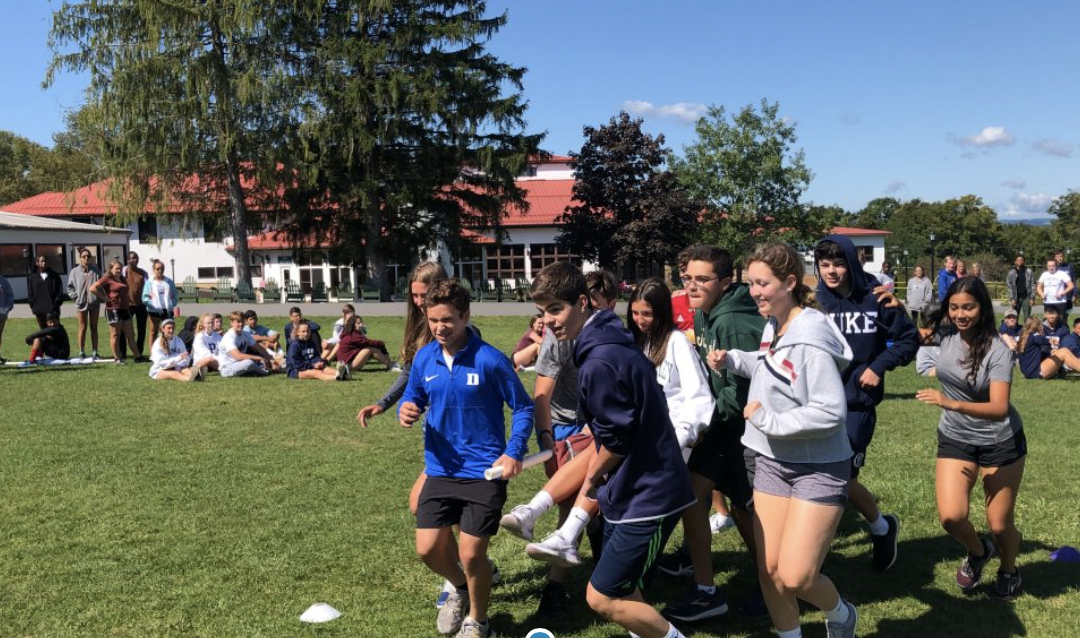
Oct 18, 2019 | Mirika Jambudi, School Trips
Mirika Jambudi (III)
Bright and early on August 28th, just a few days before the start of the school year, Pingry welcomed its newest class of freshmen on campus for the longstanding tradition of the peer leadership retreat. Alongside their senior peer group leaders, the nervous but excited freshmen crammed into four buses for the long two-hour drive to Bryn Mawr Mountain Retreat in the scenic mountains of Pennsylvania. There, the freshman undertook team-bonding exercises and activities to help them get acquainted with their peers.
When the buses arrived at Bryn Mawr, the eager freshmen were led to their cabins to quickly unpack and get ready for the multiple activities planned for the day.
The first challenge was the egg drop, where peer groups of six to eight students and two seniors worked together to create a structure that would be able to protect the egg when dropped from above. Each group then made a banner representing their peer group pride. The students also worked with each other and their peer leaders to create a chariot from cardboard and PVC pipes to carry one freshman through an obstacle course the next day.
The next challenge was an obstacle course in the woods nicknamed “The Gauntlet”; it featured a series of obstacles that involved physical activity, logical thinking, and teamwork.
“The Gauntlet really challenged us to work together, and after the first activity, it was really fun to do, and our group definitely grew closer,” said Max Watzky (III). Everyone aimed to complete the course in the quickest time, and the competitive nature of the challenge fostered a sense of camaraderie in each peer group. The most memorable part of the night was during the impromptu dance in the dining hall when all the peer leaders surprised the freshman by running out onto the dance floor in costumes. “Everyone being together on the dance floor and having fun right before school started was definitely a great way to kick off the school year!” Milenka Men (III) recalled.
At the end of the day, groups came up with skits using silly objects chosen from a bag. Watching the skits and seeing classmates take the stage in silly outfits definitely left everyone in a great mood for the rest of the evening.
The next morning, everyone woke up to pack and wrap up the peer leadership retreat. Finally, the most awaited event occurred––using the chariots made the previous day in the obstacle course. Our group took an unforgettable, unconventional route, which the other students found hilarious. The fun-filled day-and-a-half at Bryn Mawr had flown by, and it was time to leave, but not before discussing the students’ favorite parts of the trip. For my group, our unconventional way of attempting the chariot race obstacle course was definitely one of the best parts about the retreat, alongside all the friends we made. “It was a great experience, and I’m glad I got to meet tons of people right before school started! Now I’m more confident about starting at a new school,” said Katie Lin (III). All in all, the freshmen had a blast at the peer leadership retreat, found some new friends, and are ready to take on the upcoming school year!
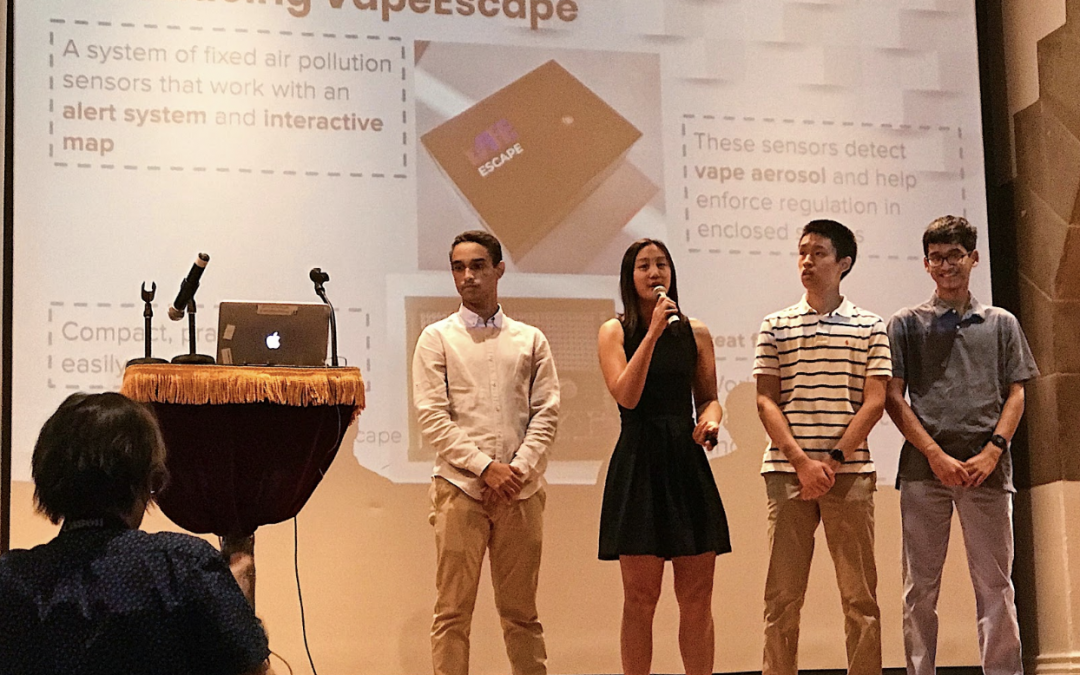
Oct 18, 2019 | Summer Experiences
Emma Huang (V)
For six weeks this summer, I had the opportunity to work in Cooper Union’s Summer STEM Makerspace Program. Filled with 3-D printers, plasma laser cutters, and soldering and circuit stations, the Makerspace was an innovator’s dream – a place where I could turn an idea into a reality. Each day, I designed, coded and prototyped. In addition to working in the Makerspace, we participated in business and entrepreneurship workshops, which included public speaking, a STEM career advice panel, and a Computer Science and Ethics discussion group. We also received lessons on how to build circuits using Arduinos (a platform for building prototypes) and how to use OnShape (a CAD, or computer aided design, software) to create 3-D models. We were tasked to identify a real-world problem, devise an invention which would address it and then pitch our ideas. I set on developing a prototype to help solve a public health crisis we face.
It was during my daily commute on the train into New York City where I saw a recurring theme. While exiting Penn Station each day, clouds of vape aerosol and cigarette smoke filled my line of sight. One morning, I even saw a mother hurriedly swerve her stroller away from the fumes and turn her children’s heads away from the smoke. As I continued to navigate my way down to lower Manhattan on the subway, I witnessed similar situations occur. In each instance, the second-hand smoke affected everyone. This made me think about that infant in the stroller, the elderly man next to me, and all the people around who are susceptible to the effects of second-hand vape aerosol and cigarette smoke. Even more, what about those who are more vulnerable, like those with pulmonary and respiratory issues as common as asthma?
Vape juice contains a glycerin base. When heated, the base degrades to chemicals such as formaldehyde and benzene gas. These carcinogens are released into the air when exhaled, thereby making the effects of second-hand smoke toxic to surrounding people. More recent data indicates that there have been over a dozen vaping-linked deaths and more than 800 vaping-related lung illnesses across the country. Knowing the vast epidemic of vaping and realizing its negative health effects, I wondered: how many people are inhaling vape aerosol second-hand without knowing it? Alternatively, how many people would avoid heavily concentrated vape areas if they had the information accessible to them? After a quick search, I was surprised to find that in our home state of New Jersey, only two towns have specific laws regulating the use of e-cigarettes in public areas (as of July 2019), and vapes and e-cigarettes do not fall under cigarette regulations. With a vaping epidemic on the rise, I wondered why a device or system which regulates vaping in public areas doesn’t already exist.
This prompted me to conceptualize VapeEscape, a fixed air pollution sensor that works with a notification system and interactive map that allows users to detect vape aerosol and cigarette smoke via a mobile app that is iOS and Android compatible. I pitched VapeEscape as my individual project proposal and formed a team of four to help make my idea a possible reality. For the next four weeks, my teammates and I spent countless hours troubleshooting code (in Arduino based C, Java, and Python languages), wiring our sensors to Arduino and Raspberry Pi circuits, and designing a sleek model of VapeEscape in CAD. Though there were some hurdles to overcome– for example, a key sensor we ordered did not arrive until a few days before our final presentation– the hard-working spirit of my team resulted in the creation of a product we envisioned as being instrumental in regulating air safety in workplaces, hospitals, airports, schools, and restaurants, to name a few.
The insight I gained from this summer has been invaluable. From working with the Cooper Union faculty to collaborating with peers of different backgrounds, I was excited to learn from and share ideas with a diverse group of innovators. I’ve also realized how much I value the role of technology as a springboard to benefit the greater society, especially in tackling solutions to problems that plague our communities.
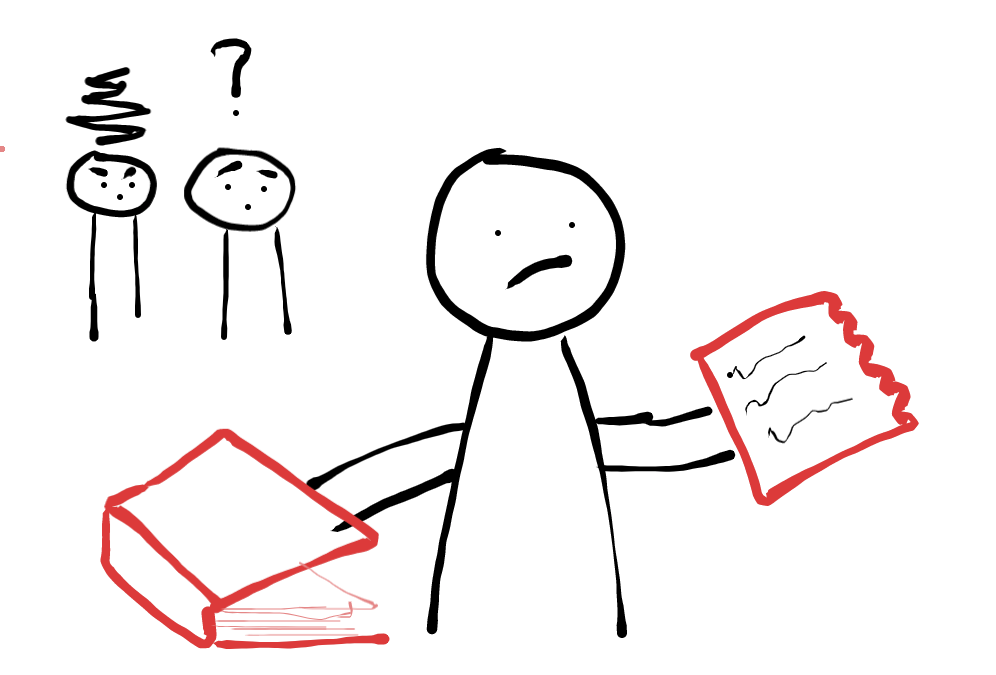
Oct 18, 2019 | Summer Experiences
Helen Liu (V)
The speaker at the podium––let’s call him A––gave his speech, charged with emotion. I never knew he could write like this, I thought, as I clapped along with my friends at the particularly touching parts. I didn’t know A that well—he was in a separate friend circle at that point—but the works he shared in our summer writing class had always been deeply personal. They were sharp and honest declarations of his cultural identity and body image, but they had never been as carefully planned and brilliantly executed as this one.
Later that night, after everyone finished presenting, my entire friend group crowded into one room and started discussing all the orations we’d heard. We loved Elijah’s speech, Annie’s story was beautiful, and A did so well; did you know he could write like that? Those that had presented were congratulated, and those that hadn’t yet were encouraged to do so next week. This was a writer’s workshop after all. Nobody would judge us, as long as we did our best.
There was a knock on the door and a classmate stepped in, looking frazzled. “Uh, hey, sorry, I didn’t want to bother you guys, but my friends are getting all caught up in drama right now, and I don’t really want to get involved.” She shut the door behind her, looked around, and continued in a hushed voice. “Did you know that A plagiarized his entire speech off Youtube?”
It was true. The word choice, the inflection in tone, the pauses every few sentences. A had copied almost every single thing. He didn’t own up to it fully; when the truth caught up to him, he claimed that he found the speech online in his native language and had translated it. He apologized for plagiarizing and promised that he wouldn’t do it again. Yet a week later, when we were sharing pieces for our class anthology, he read a piece that one of my friends had previously shown me online. After finishing, he looked at me with a smile and said, “I spent a lot of time on this, taking inspiration from all different parts of my life. Did you like it?”
I smiled back, genuinely, but a little sad. “Of course. It’s beautiful.”
I should’ve been angry. He was lying straight to my face; he broke his promise and my already-wavering trust in him as a friend. Though, with A, I realized I couldn’t even be annoyed.
One of the first pieces he had shared in class was one he had written during a free-writing session. He talked about his childhood as an immigrant and the self-hatred that developed because of it. He wished he had blonde hair and blue eyes when he was young, and later he despised his body altogether. He was insecure about his English and had always felt out of place. It wasn’t until high school, he said, that he began to understand that he should love himself for who he was; in his words, he was “a star that shone and could help other people shine too.”
He would randomly compliment people in class and was always the first to declare with a grin that our writing was beautiful or that we were the nicest people he’d ever met. The last night at the workshop, he hugged me, urged me to stay in touch, and thanked me for being his friend.
So, even though A plagiarized and lied, all I could do was hope that he became more confident in himself. I’m sure he knew what he was doing was wrong—he was just too insecure to stop. After all, in class, he’d always jokingly-but-not-so-jokingly deprecate his own work. The idea of showing it to other people, let alone presenting it to an entire camp, must have been terrifying. I couldn’t be angry at him. Sure, I was a little disappointed, but mostly, I felt bad for him. Taken without context, this seems ridiculous. Why would I feel bad for someone who plagiarized, promised he wouldn’t do it again, and then broke that promise?
I felt bad because that’s not all who A was. I barely knew him, yet I could tell he was optimistic, cheerful, and the type of person who wanted to make those around him happy, even while struggling with his own happiness. To reduce him to a plagiarizer—that would be ridiculous.








